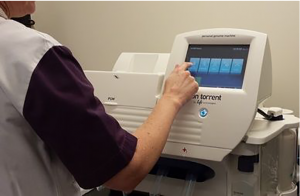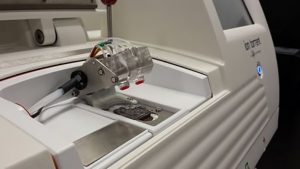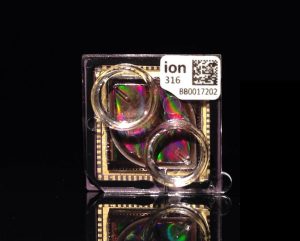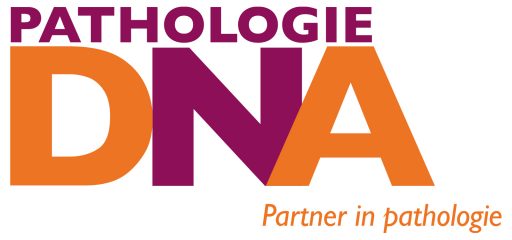Next Generation Sequencing
Predicting Treatment Response with the Tumour's Genetic Profile
As a doctor, you want the best possible treatment for your patients. The genetic profile may be a useful addition to tumour typing, grading, and staging. With Next Generation Sequencing we look for relevant mutations. If a tumour has a mutation with a significant therapy response, the patient may benefit from treatment. This knowledge also reduces the number of ineffective treatments, preventing unnecessary toxicity and high costs for the patient.
Advantages of Next Generation Sequencing
- Mutation status of all relevant genes is determined in a single experiment
- Very small quantity of tissue required
Relatively low costs - We strive to deliver a result for all genes within one week after the request

Technique
In order to conduct Next Generation Sequencing we have at our disposal:
- Ion Torrent: a pH-mediated next-generation sequencer whereby the base pair sequence is read based on a pH change after incorporating a specific nucleotide.
- Ion Chef: robot for the standardised preparation of patient materials and preparing the libraries on the sequencing chip. This reduces the number of manual steps and possibilities for (human) error.
- Sequencing chips: Chips on which millions of sequencing reactions can be conducted in parallel. This makes it possible to measure all relevant genes within a matter of hours.
- Ion Reporter: Standardised analysis software that has been specifically designed for the Ion Torrent technology.
- Laboratory: ISO15189-accredited molecular laboratory.

The Key to Targeted Therapy
At Pathology-DNA, you can request various standard gene panels to optimize your diagnosis for targeted therapy and differential diagnosis purposes. Besides testing the standard indicated genes (as listed below), we can also detect mutations in additional genes that may become important in the near future and are still being tested in clinical trials.
Targeted therapy
- Lung cancer: KRAS, EGFR, BRAF, ERBB2, MEKI, PIK3CA, ALK
- Colorectal cancer: KRAS, NRAS, BRAF, PIK3CA
- Melanoma: BRAF, NRAS, KIT
- Gastrointestinal stromal tumours: KIT, PDGFRA, BRAF
- Breast cancer: ERBB2, PIK3CA
- Thyroid cancer: BRAF, KRAS, NRAS, HRAS
Differential diagnostics
- Relation of multiple tumours (question of second primary tumour or metastasis): TP53, CDKN2A + full Cancer Hotspot Panel (50 genes)
- Papillary thyroid cancinoma: BRAF
- Low-grade glioma: IDH1, IDH2
- Uveal melanoma and spitzoid naevus: BRAF, NRAS, HRAS, KIT, GNAQ, GNA11
- Desmoid tumour: CTNNB1
- Langerhans cell histiocytosis: BRAF
- Hairy-cell leukemia: BRAF
New developments
Op dit moment werken we bij Pathologie-DNA aan:
- Centralisatie van moleculaire technieken en kennis ter vergroting van kwaliteit en efficiëntie
- Up-to-date blijven om qua diagnostiek direct te kunnen inspelen op nieuw mutaties of doelgerichte middelen
- Uitbreiding van het NGS-portfolio voor een nog completere moleculaire diagnose
- Detectie van translocaties en fusiegenen
- Analyse van copy number variaties (amplifictie en deleties)
- Ontwikkeling specifiek panel voor lymfoomdiagnostiek
- B- en T-cel clonaliteits bepaling (momenteel nog m.b.v. fragment analyse).
Reference
My cancerGenome website: www.mycancergenome.org

Specific requests
Consult with our molecular biologists about other genes that may possibly be determined for specific questions.
Email us at: moleculair@pathologie-dna.nl
